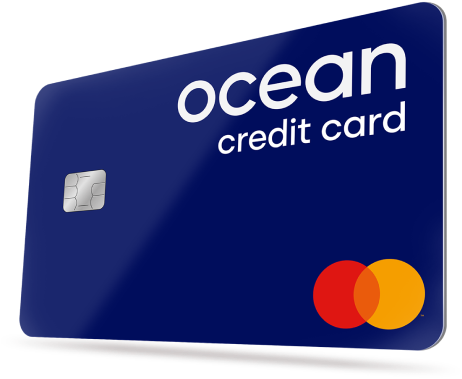Can I consolidate credit card debts?
Yes, it is possible to consolidate your credit card debts into one monthly repayment.
There are several different options available, but the two most common ways to consolidate these debts are to:
• Take out a new personal loan or debt consolidation loan and use it to pay off your debts.
• Transfer your existing credit card balances onto a low or 0% interest credit card.
Not only could these methods make your payments more manageable, but you may also be able to clear your debts faster if you have more disposable income each month to put towards them. This is particularly the case with a low or 0% interest credit card.
No matter the method you choose, you’ll likely only have one payment to make each month rather than having to keep track of different balances, payment dates, and interest rates for each card.
You may be able to lower your outgoings or pay off your debts faster, but each type of debt consolidation comes with different terms and conditions to consider.
The total amount repayable will depend on the interest rate you’re offered and the time it takes to pay off your debt. The quicker you pay it off, the less interest you’ll pay overall.
What is a balance transfer credit card?
A balance transfer credit card is a type of credit card that offers a low or 0% interest rate on transferred balances. This rate is often offered for a limited period (usually between 3-29 months) and a balance transfer fee may also apply (typically around 2% or 3% of your debt balance).
What should I consider before consolidating my credit cards?
- Consider other ways to clear your debt, such as using any cash savings
- Take steps to improve your credit score to qualify for the best possible interest rates
- Check that the interest rate after the initial offer is lower than your existing rate
- See if the introductory rate period is long enough to clear your debt
- Find out if a one-off transfer fee applies and work out if consolidating your cards would save you money overall.
- Use an eligibility checker before you apply to see your chances of approval without affecting your credit score. Work on improving your score before you apply if your options are limited.
What are the pros and cons of paying off credit card debt with a credit card?
|
Pros |
Cons |
|
All or some of your debts will be in one place. |
You may need to pay a one-off transfer fee. |
|
It could make your debt more manageable. |
Your interest rate may increase after the low rate or 0% period ends. |
|
You may pay less interest overall. |
Interest rates can be high if you use the card for new spending. |
|
Your credit score may improve if you keep up with your repayments. |
You may need good credit to qualify. |
|
You could repay your debts quicker. |
A penalty charge may be applied if you miss your repayments. |
Ocean Credit Card
See if it's a YES before you apply
- Up to £8,000 credit limit
- Checking won't affect your credit score
- Get a response in 60 seconds
Intelligent Lending Ltd (credit broker). Capital One is the exclusive lender.

How to use a balance transfer credit card to manage debt
A balance transfer credit card can allow you to move your existing debts from one or more cards with a high interest rate to one with a low or 0% interest rate. You may need a strong credit score to qualify for the lowest rates.
Once you’ve transferred your balance, you won’t have to pay as much – or any – interest on your debt. This means that you will have more money to put towards clearing the debt and could potentially pay it off faster.
Keep in mind that low or 0% interest rates may only be offered as an introductory or limited-time deal and the credit card’s rate is likely to go up when the offer expires.
A balance transfer credit card might not be the right choice for you if:
• You have a poor credit score and might not be eligible for a low interest rate card
• You have several different types of debt to consolidate, such as loans or store cards.
Tips to avoid credit card debt in the future
Here are three ways to avoid credit card debt after consolidation:
- Make your repayments in full and on time
- Close your credit card accounts so that you’re not tempted to use them again. Bear in mind however, that closing an old account can bring down the average age of your accounts and could reduce your total available credit.
- Remember that any new spending will usually not be charged at the reduced rate
What’s the difference between a debt consolidation loan and a balance transfer credit card?
Balance transfer cards are a type of revolving credit designed to help clear existing credit card debts. Unlike loans, which are repaid in fixed installments, balance transfer cards let you borrow, repay, and borrow again up to your credit limit.
These cards are ideal if you want to reduce the amount of interest you’re paying on existing debt, giving you a chance to pay it off faster. However, to make the most of a balance transfer card, it’s important to focus on paying down the debt and avoid spending on the card, as new purchases may not benefit from the same interest-free terms.
A debt consolidation loan is designed to help you to pay off your existing debts. It might be the right choice for you if you have several different types of debts, a mixed credit history, or a high debt balance.
“Depending on your eligibility and the terms and conditions that apply, a debt consolidation loan can often offer a lower interest rate than a standard credit card.”
You’ll also likely be offered a structured payment plan and could reduce your monthly repayments by spreading them over a longer loan term. However, extending the term may mean you pay more interest overall.
Can you pay a credit card bill with a credit card?
No, you typically can’t pay a credit card bill directly with another credit card. Most credit card issuers don’t allow this, as payments usually need to come from a bank account or other acceptable payment method.
Will credit card consolidation affect my credit score?
Credit card consolidation, whether it’s via debt consolidation loan or balance transfer credit card, is a type of credit and so it can affect your credit score either positively or negatively.
Why might consolidation lower your credit score?
- Opening a new account may decrease the average age of your account
- Every new credit application involves a hard search on your credit report, which could affect your score
However, these negative effects can be temporary and have less of an impact than missed or delayed payments. Consolidation could even improve your credit score if you pay off your existing debt and keep up with your new monthly repayment.
If you’re struggling with debt, you can access free financial advice and support from a professional debt specialist. Visit Money Wellness, StepChange, Citizens Advice, National Debtline, or MoneyHelper to find out more.
Disclaimer: We make every effort to ensure content is correct when published. Information on this website doesn't constitute financial advice, and we aren't responsible for the content of any external sites.






